The city of Himeji boasts Japan’s most impressive-looking surviving castle. A castle was first built on the site in 1333 but was largely destroyed in the subsequent civil wars. The present form was built in 1601.
Even though it is made mostly of wood and plaster it has not burned down since, even when the city was bombed to rubble during the Second World War. However much of the original wood was replaced in a restoration project begun in the 1950s.
This is the innermost of what was once a system of 3 moats that encircled the city. Only this moat still exists.
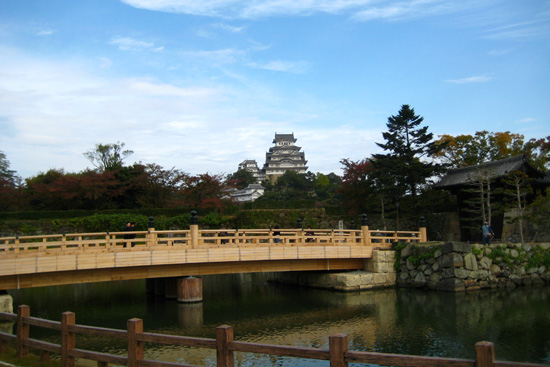
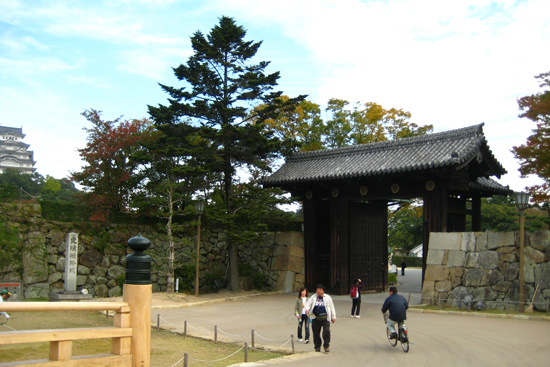
After crossing the moat and passing through the gate, the castle keep can be seen across a huge field.
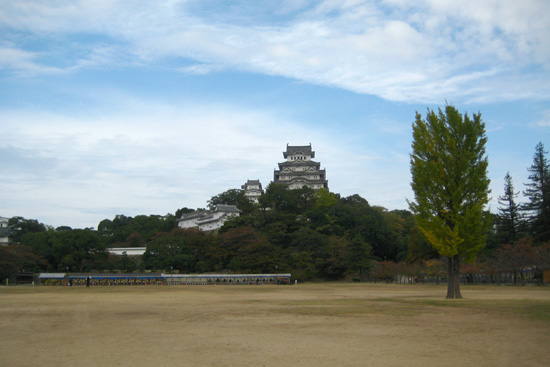
A path around the edge of the field, lined with cherry trees, leads to a small unfriendly-looking gate, surmounted by holes through which people can shoot at you.
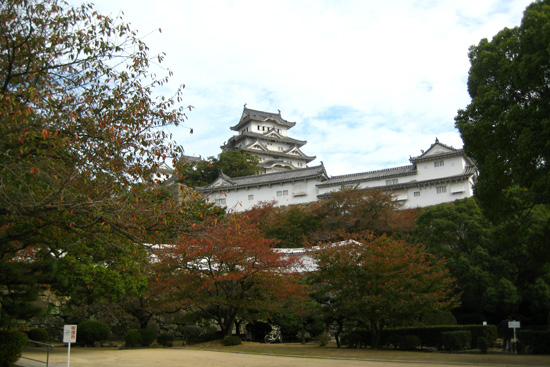
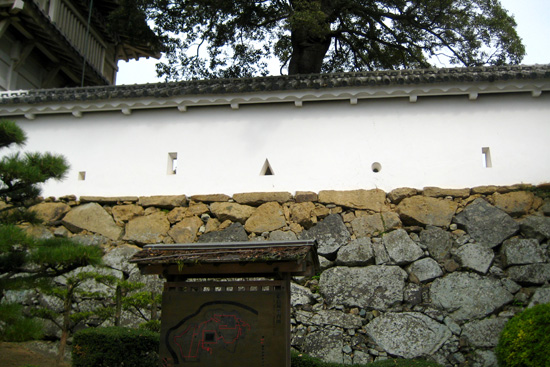
Once you are through this gate, you have to decide which way to turn. Turning right and walking toward the keep will lead you into a maze of twisty narrow dead-end alleys whose walls have holes through which people can shoot at you. It is a better idea to turn left and walk away from the keep.

The path curves around through a series of gateways.
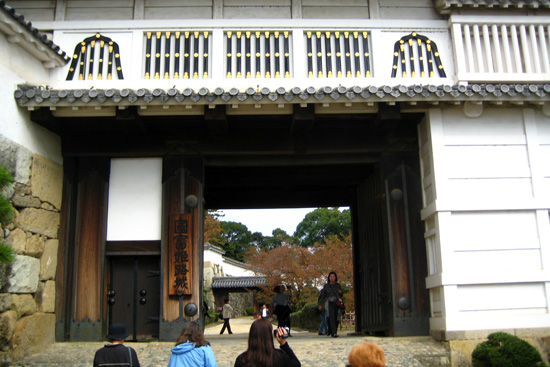
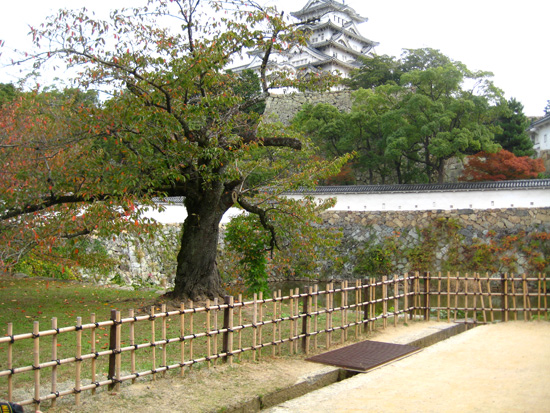
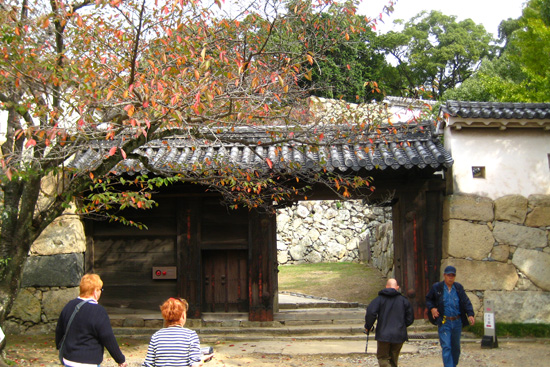
Rectangular holes in the walls are meant for shooting arrows. Square or triangular holes are for muskets.
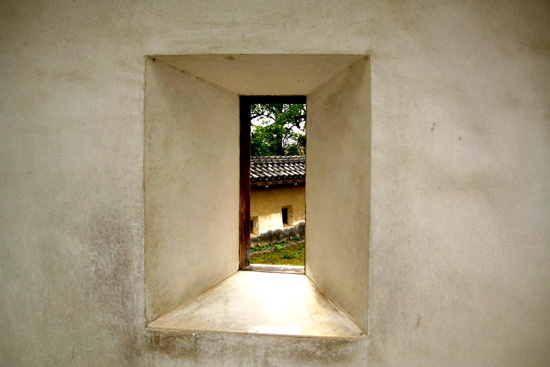
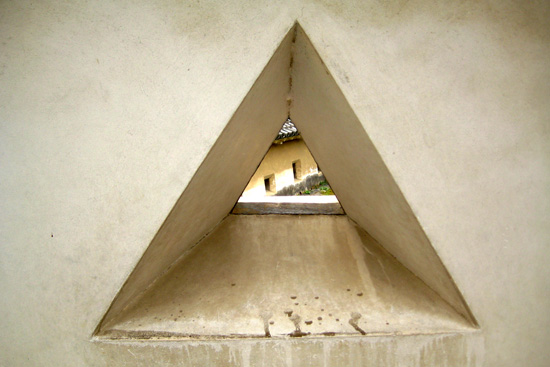
Finally we reach the inner wall protecting the keep.

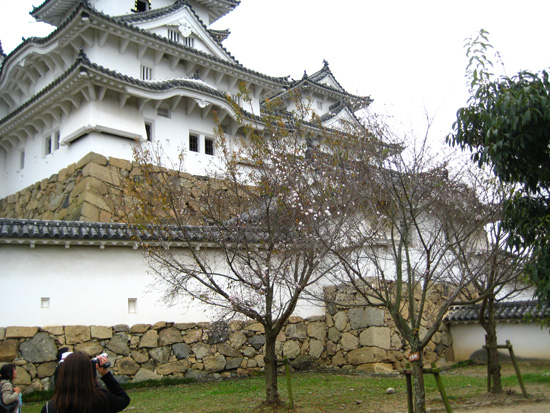
Note the large drain spouts at the corners, designed for pouring boiling water on unwelcome visitors. (Boiling oil is not a good idea if your castle is made of wood.)
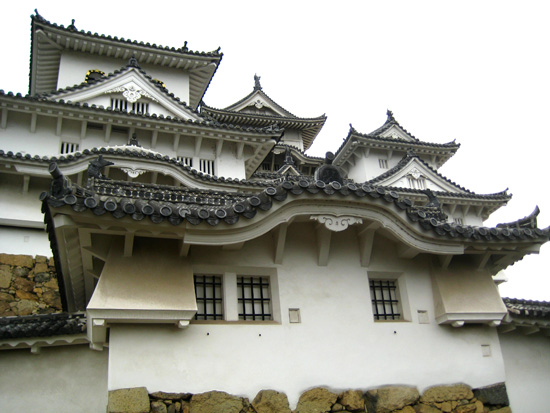
The inner wall has an iron gate.
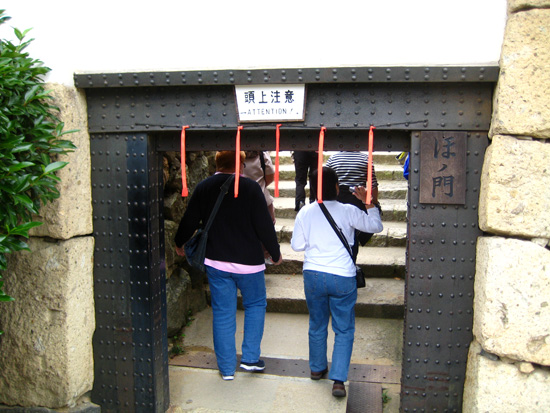
A narrow courtyard filled with storage buildings.
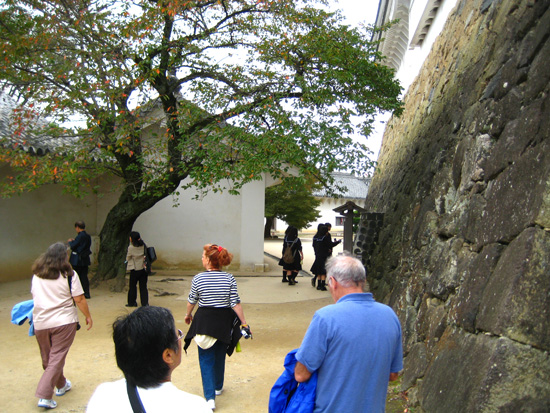
This shows the crests of all the lords who have held the castle.
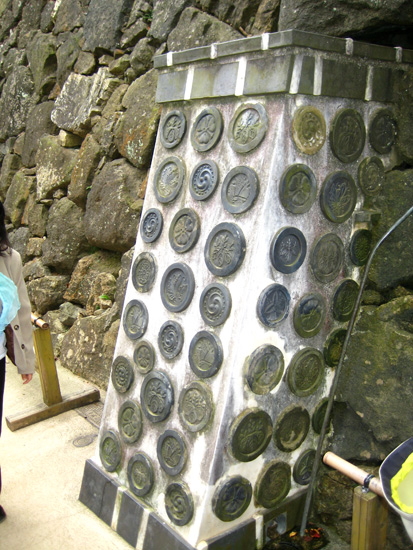
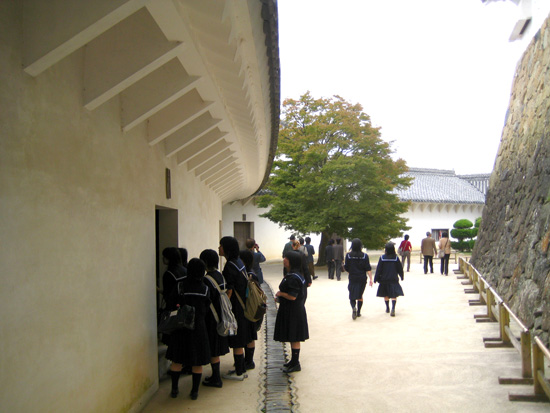
Around the keep, and through another gate to a more open courtyard.
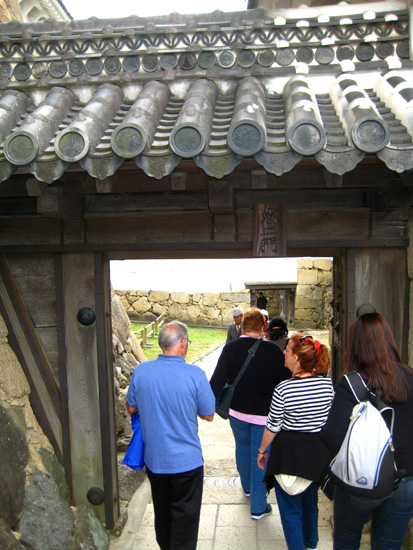
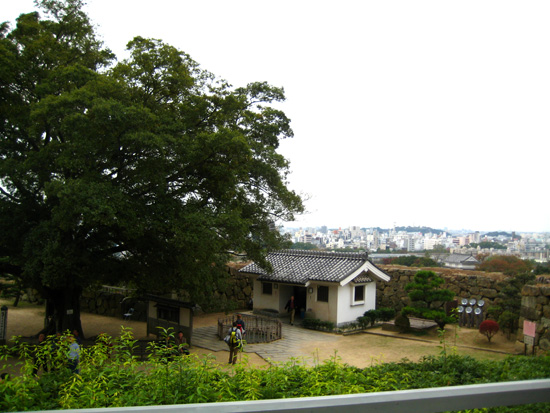
Then up some steps and down some more steps and finally we can enter the keep. Visitors entering the keep are required to remove their shoes and carry them in plastic bags.
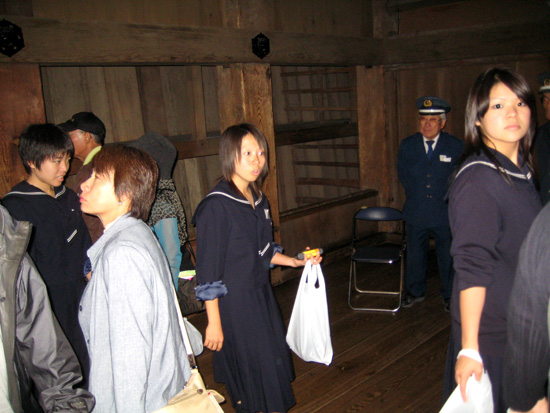
The first floor windows have a commanding view of the courtyard.
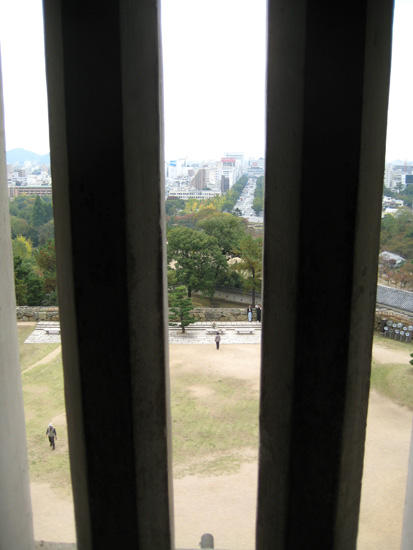
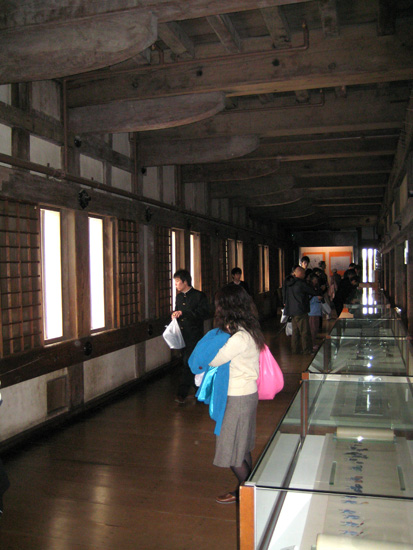
An old map shows the castle and the city, including the layout of the original three moats.
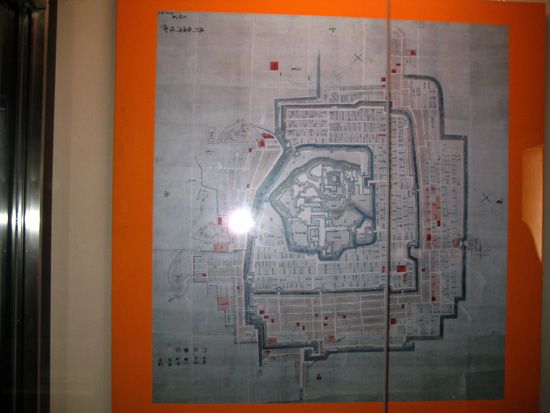
Tadazane Sakai, one of the lords of the castle, drew these pictures of a carp trying to swim up a waterfall. (According to legend, a carp that succeeds in doing this will become a dragon.)
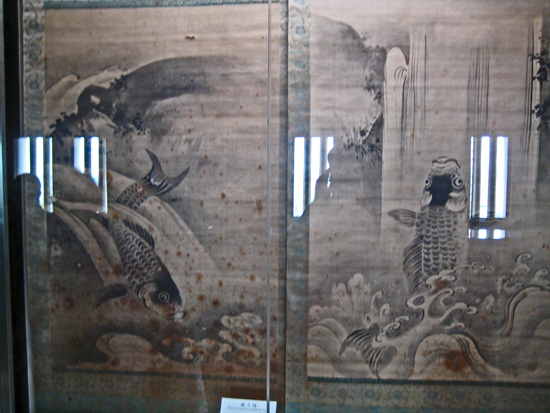
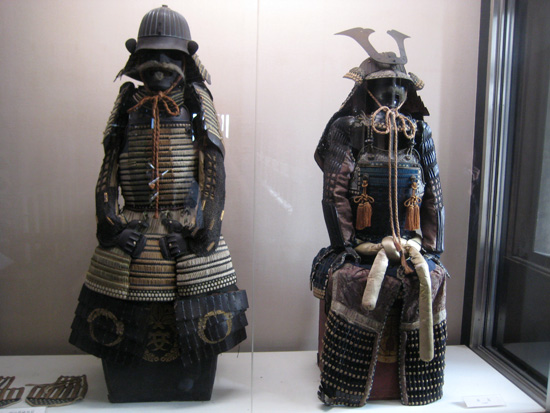
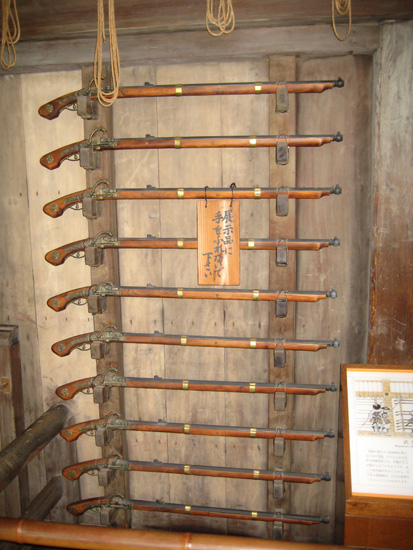
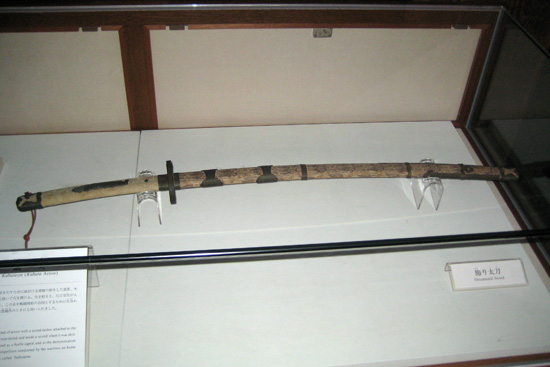

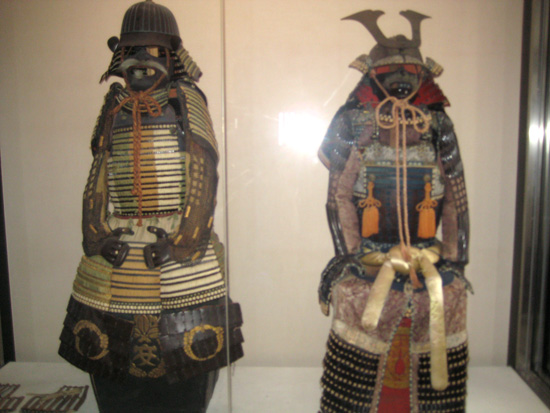
These wooden paddles were used in a ball game played by noblewomen.
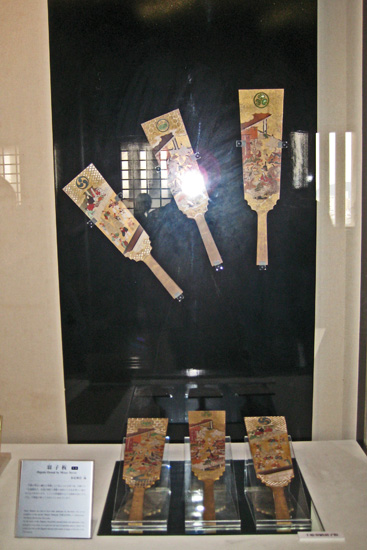
These doors lead to small rooms where a samurai could hide and jump out at an opportune moment.
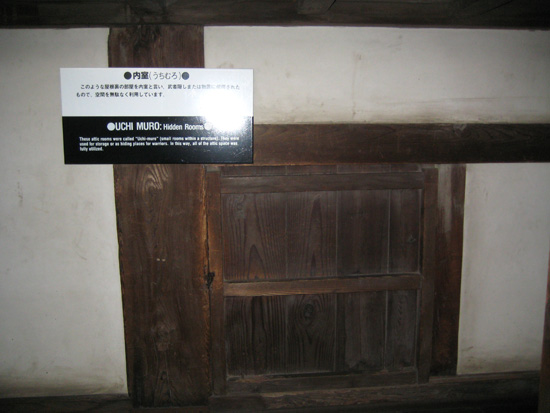
Naturally the windows of the upper floors give a better view.
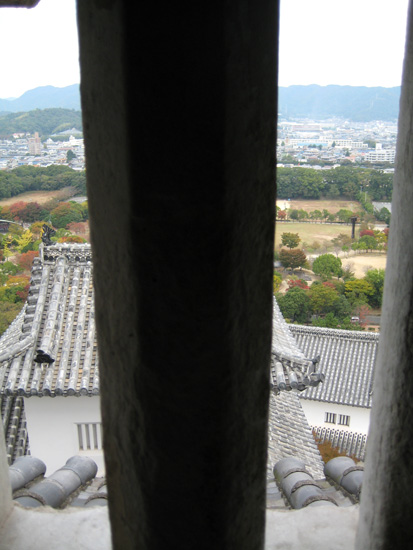
From the sixth floor you can see the entire city.
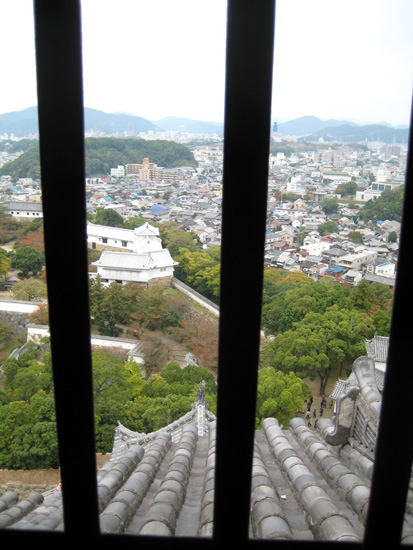

The hill where the castle was built was originally occupied by a Shinto shrine. To keep the kami happy a small shrine was set up on the sixth floor.
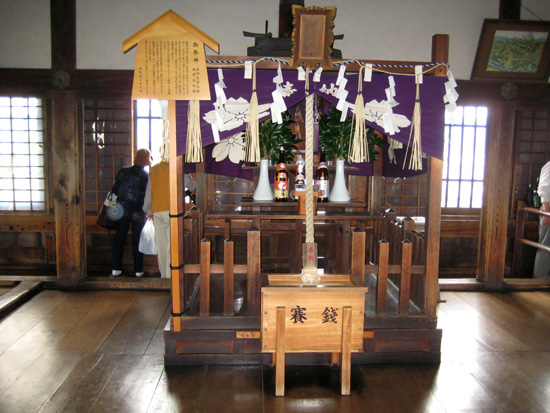
A structural model of the keep.
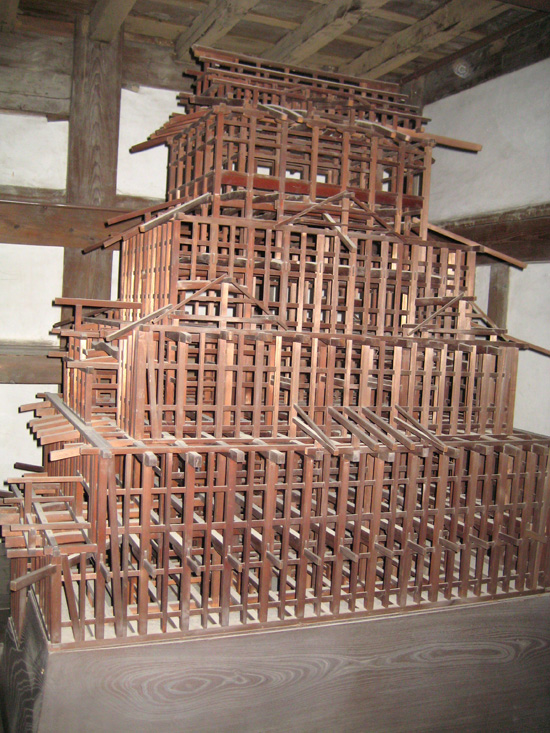
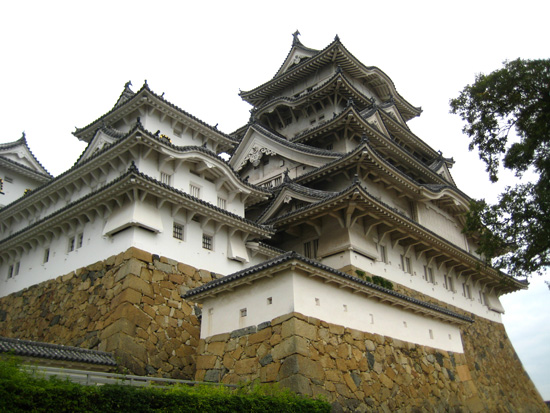
According to legend this well is haunted by the ghost of a serving girl who was killed and thrown into the well by a jealous samurai whose advances she rejected.
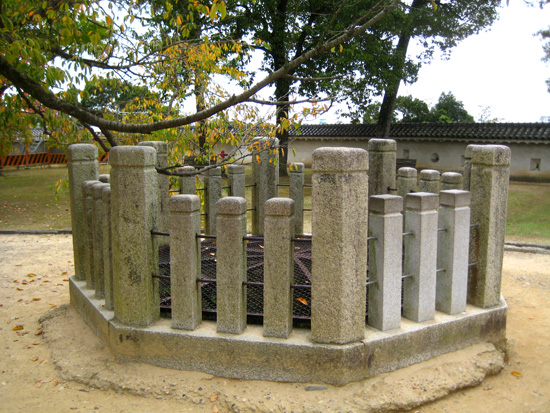
Actually this story is a hoax put about by the lords of the castle. A secret underground escape passage ran from the keep to the well, and the owners wanted to keep people from hanging around the well and perhaps discovering it.
Though the castle’s defenses are ingenious they have never actually been tested, since the castle in its current form was built just after the end of the last major period of civil war. It seems to me that a few siege engines capable of throwing crude firebombs should be able to take care of the place pretty quickly–assuming that you had enough troops to get them over the moats and move them in range of the keep.
Based on my limited knowledge of Japanese history I have the impression that castles like this generally could not withstand a siege by a large and well-equipped army.

